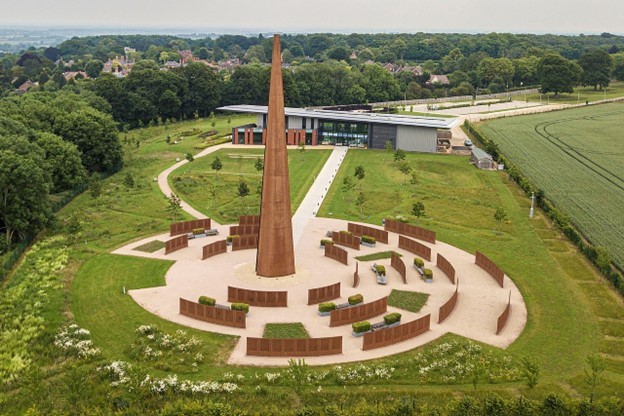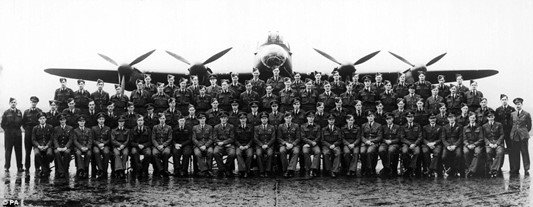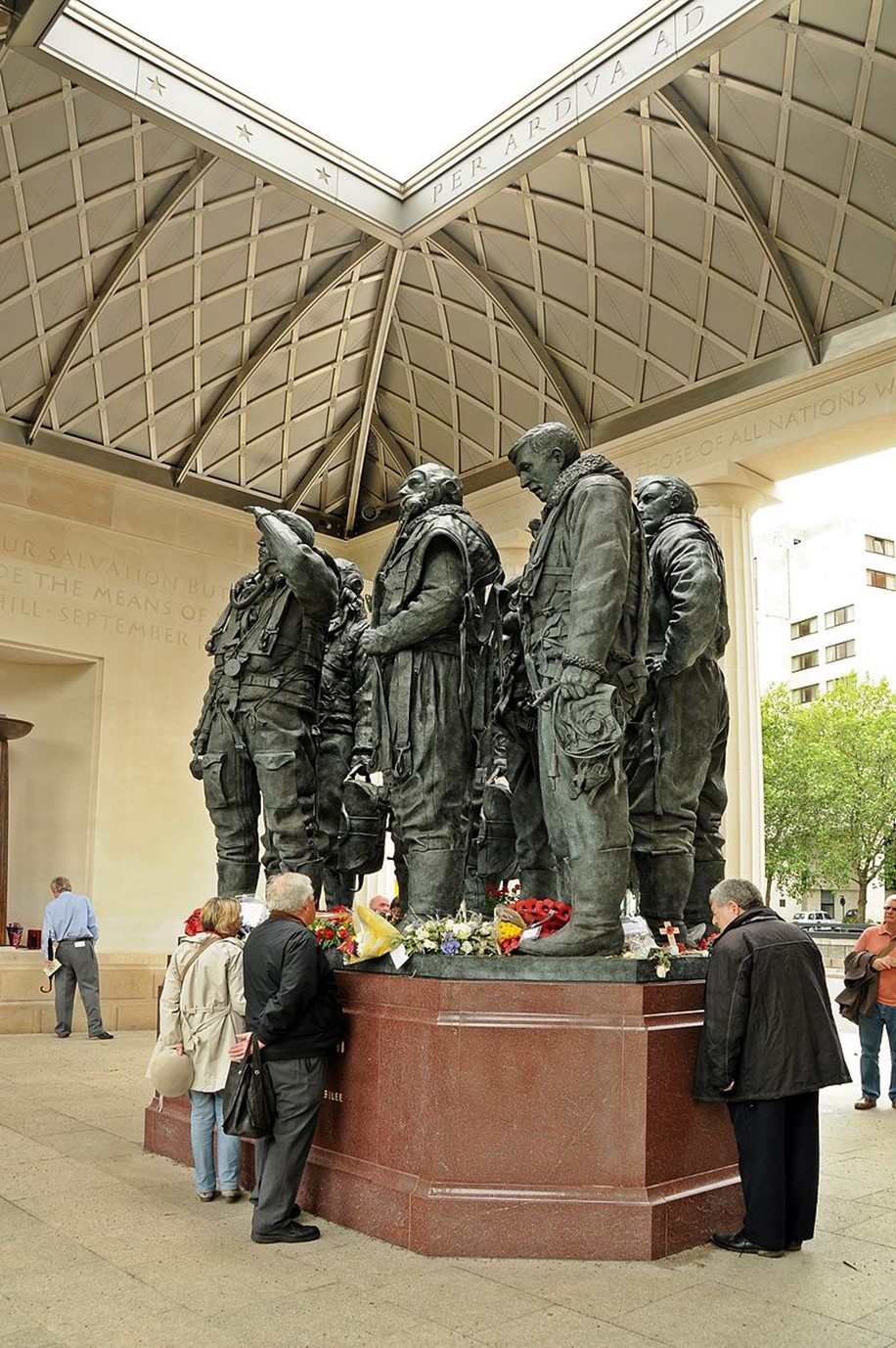WWII Greatest Losses Bomber Harris and the Truth of Military History
By Col Michael C. Howard US Marines (Ret)
Every so often, particularly to younger generations who may naively judge the leaders of the past who were faced with tremendously difficult decisions, it is important to stop and face the fact that freedom is not free.
WWII and the Royal Air Force sacrifice are one clear example.
RAF Bomber Command controlled the Royal Air Force's bomber forces from 1936 to 1968. Along with the United States Army Air Forces, it played the central role in the strategic bombing of Germany in World War II. From 1942 onward, the British bombing campaign against Germany became less restrictive and increasingly targeted industrial sites and the civilian manpower base essential for German war production. In total 364,514 operational sorties were flown, 1,030,500 tons of bombs were dropped and 8,325 aircraft lost in action. Bomber Command crews also suffered a high casualty rate: 55,573 were killed out of a total of 125,000 aircrew, a 44.4% death rate. A further 8,403 men were wounded in action, and 9,838 became prisoners of war.
Bomber Command stood at the peak of its post-war military power in the 1960s, the V bombers holding the United Kingdom's nuclear deterrent and a supplemental force of Canberra light bombers. In 1968 it was merged with Fighter Command to form Strike Command.
In August 2006, a memorial was unveiled at Lincoln Cathedral.[2] A memorial in Green Park in London was unveiled by Queen Elizabeth II on 28 June 2012 to commemorate the high casualty rate among the aircrews.[3] In April 2018 The International Bomber Command Centre was opened in Lincoln.
British WWII RAF Casualties
See also: German casualties in World War II § Air raid deaths
Bomber Command crews suffered an extremely high casualty rate: 55,573 killed out of a total of 125,000 aircrew (a 44.4 per cent death rate), a further 8,403 were wounded in action and 9,838 became prisoners of war. This covered all Bomber Command operations.[23]
A Bomber Command crew member had a worse chance of survival than an infantry officer in World War I; more people were killed serving in Bomber Command than in the Blitz, or the bombings of Hamburg or Dresden.[23] By comparison, the US Eighth Air Force, which flew daylight raids over Europe, had 350,000 aircrew during the war and suffered 26,000 killed and 23,000 POWs.[23] Of the RAF Bomber Command personnel killed during the war, 72 per cent were British, 18 per cent were Canadian, 7 per cent were Australian and 3 per cent were New Zealanders.[24]
Taking an example of 100 airmen:
• 55 killed on operations or died as a result of wounds
• three injured (in varying levels of severity) on operations or active service
• 12 taken prisoner of war (some wounded)
• two shot down and evaded capture
• 27 survived a tour of operations[25]
In total 364,514 operational sorties were flown, 1,030,500 tons of bombs were dropped and 8,325 aircraft lost in action.
Harris was advised by an Operational Research Section (ORS-BC) under a civilian, Basil Dickins, supported by a small team of mathematicians and scientists. ORS-BC (under Reuben Smeed) was concerned with analysing bomber losses. They were able to influence operations by identifying successful defensive tactics and equipment, though some of their more controversial advice (such as removing ineffectual turrets from bombers to increase speed) was ignored.[26]
The very high casualties suffered give testimony to the dedication and courage of Bomber Command aircrew in carrying out their orders. The overall loss rate for Bomber Command operations was 2.2 per cent, but loss rates over Germany were significantly higher; from November 1943 – March 1944, losses averaged 5.1 per cent.[27] The highest loss rate (11.8 per cent) was incurred on the Nuremberg raid (30 March 1944).[28] The disparity in loss rates was reflected in that, at times, Bomber Command considered making sorties over France only count as a third of an op towards the "tour" total and crews derisively referred to officers who only chose to fly on the less dangerous ops to France as "François".[29][30] The loss rates excluded aircraft crashing in the UK on return, even if the machine was a write-off and there were crew casualties, which amounted to at least another 15 percent.[31] Losses in training were significant and some courses lost 25 per cent of their intake before graduation; 5,327 men were killed in training from 1939 to 1945.[32]
RAF Bomber Command had 19 Victoria Cross recipients.[33][note 1]
At the start of the bombing campaign, Harris said, quoting Hosea 8:7 from the Old Testament, "The Nazis entered this war under the rather childish delusion that they were going to bomb everyone else, and nobody was going to bomb them. At Rotterdam, London, Warsaw and half a hundred other places, they put their rather naive theory into operation. They sowed the wind, and now they are going to reap the whirlwind." Harris comments that he first made this comparison while standing with Portal watching the London Blitz in 1940.[41]
https://en.wikipedia.org/wiki/Arthur_Harris
In his postwar memoirs Harris wrote, "In spite of all that happened at Hamburg, bombing proved a relatively humane method".[66] His wartime views were expressed in an internal secret memo to the Air Ministry after the Dresden raid in February 1945
I ... assume that the view under consideration is something like this: no doubt in the past we were justified in attacking German cities. But to do so was always repugnant and now that the Germans are beaten anyway we can properly abstain from proceeding with these attacks. This is a doctrine to which I could never subscribe. Attacks on cities like any other act of war are intolerable unless they are strategically justified. But they are strategically justified in so far as they tend to shorten the war and preserve the lives of Allied soldiers. To my mind we have absolutely no right to give them up unless it is certain that they will not have this effect. I do not personally regard the whole of the remaining cities of Germany as worth the bones of one British Grenadier.[66][67][b]
Whenever the bombing campaign of World War II is considered it must be appreciated that the war was an "integrated process". As an example, quoting Albert Speer from his book Inside The Third Reich, "ten thousand [88mm] anti-aircraft guns ... could well have been employed in Russia against tanks and other ground targets".[68] The Soviet commanders clearly recognized Harris's efforts, as shown by the 29 February 1944 award of the Russian Order of Suvorov First Class to the air marshal.[52]
God bless him. And to Americans, this applies also to Hiroshima & Nagasaki.
Mike Howard








